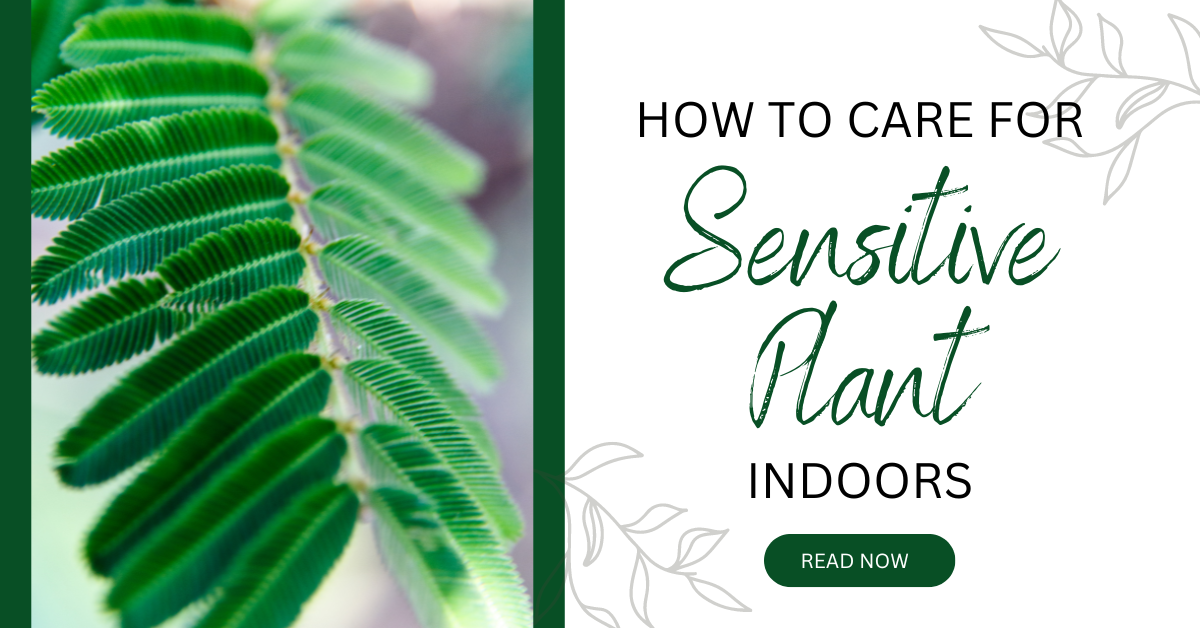Have you ever heard of a plant that moves when you tickle it? Sounds like something out of a fairytale, right? Well, it’s not a product of fantasy but a fascinating reality called the sensitive plant. With the scientific name of Mimosa pudica, this popular houseplant has captured the hearts of plant enthusiasts and skeptics alike. Why? Because it brings the magic of nature right into your living room. Imagine having a friend over, and as you gently touch the fern-like leaves of your sensitive plant, they immediately fold up, eliciting gasps of surprise and delight. It’s like having your very own botanical showpiece!
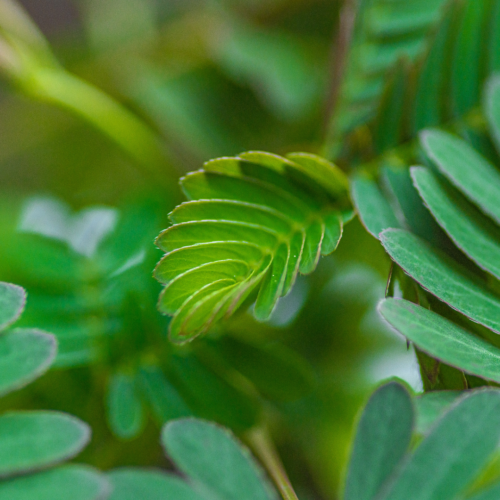
Growing a sensitive plant indoors isn’t just about the awe-inspiring reactions it has to physical touch. It’s a journey filled with learning, patience, and, let’s be honest, a bit of trial and error. But don’t let that daunt you! With a dollop of dedication and the right care tips up your sleeve, you can foster a thriving sensitive plant that might just become the talking point of your home. From the perfect soils to the nitty-gritty of watering schedules, this guide will walk you through the essentials of bringing your sensitive plant from seed to spectacular.
So, grab your gardening gloves, and let’s dig into the delightful world of growing sensitive plants indoors. Whether you’re a seasoned green thumb or a budding plant parent, there’s something incredibly rewarding about nurturing these responsive creatures.
Here’s what we’re going to be covering, feel free to jump around as you need:
Key Features of the Sensitive Plant
I wanted to start off with a few facts about the sensitive plant, also called the touch-me-not plant, shame plant, or humble plant. Because when we understand where our plants come from, we can then understand how to nurture them in our homes.
Why is it Called a Sensitive Plant?
The sensitive plant, or Mimosa pudica, earns its common names from the remarkable way it responds to touch. When you brush your fingers against its leaves, they fold inward and droop down, almost as if they’re shy or attempting to defend themselves from potential harm. This isn’t just a party trick; it’s an evolutionary adaptation that protects the plant from predators in the wild. But don’t worry, the leaves of the mimosa pudica bounce back in no time, ready for the next gentle touch or gust of wind. It’s this dynamic interaction that makes it a favorite among garden enthusiasts!
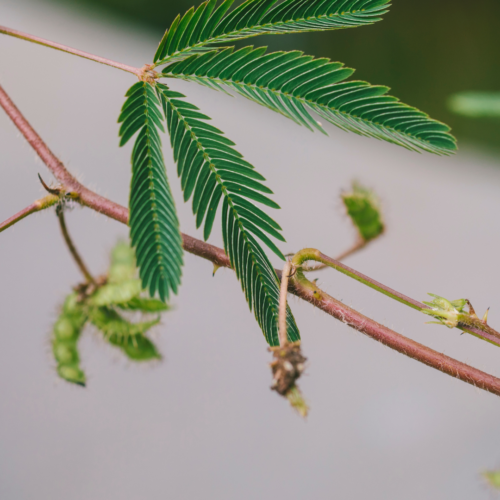
Natural Habitat of the Sensitive Plant
The sensitive plant is in fact a tropical plant that is native to the tropical regions of Central America and South America, where it thrives in warm, humid environments such as tropical rainforests. To help it flourish indoors, replicating these tropical climates is crucial. Mimosa pudica requires sunlight and humidity to thrive, even in city settings. Understanding its natural habitat can assist in providing the necessary care for this plant in your indoor environments.
By acknowledging the plant’s origins and its unique sensitivity to touch, you can effectively care for a sensitive plant.
Step-by-Step Guide: Starting Sensitive Plants from Seed
Growing a sensitive plant from seed is a fascinating journey. Here’s the straightforward process to turn seeds into touch-responsive plants:
Germinating Sensitive Plant Seeds
First things first, let’s get those seeds ready to sprout. Sensitive plant seeds have a bit of a reputation for being, well, sensitive. Here’s a tried-and-true method to wake them up:
- Soak the seeds: Start by soaking the seeds in warm water for 24 hours. This softens the hard outer shell and tells them it’s time to get growing.
- Prepare your soil: While they’re soaking, get a small pot filled with a mix of potting soil and sand. Make sure it’s well-draining because soggy conditions are a no-go.
- Sow the seeds: After their spa day, place the seeds on the soil surface and cover them lightly with more soil. They’re shy and don’t like to be buried too deep.
- Moisture and warmth: Sensitive plant seeds germinate best in warm conditions. Keep the soil moist (not soaking) and in a warm spot but out of direct sunlight. You can also cover the pot with clear plastic such as an old bottle or plastic wrap to help boost the humidity while the seed is just starting out.
Keep an eye out, because in about 1-2 weeks, you should see the first signs of life as tiny green shoots break through the soil. It’s a moment of pure gardening bliss, trust me.
Transplanting Seedlings Into Pots
Once your seedlings have a few true leaves, it’s time for their next big move. Transplanting might sound daunting, but it’s just about giving your plant babies a new home with a little more room to grow.
- Choose the right pot: A small pot with good drainage holes is key. Remember, sensitive plants don’t like wet feet.
- Be gentle: Handle the tiny seedlings with care, especially their delicate roots. Use a spoon or a small stick to ease them out of their nursery soil.
- The transplanting dance: Make a small hole in the soil of their new pot, settle your seedling in, and gently firm the soil around them. Water them lightly to help them settle in and place them in enough sunlight to have them grow, without burning their leaves.
Congratulations! You’ve just completed the nursery phase of the sensitive plant’s life. As they grow, these little troopers will need your care and attention, but seeing them respond to your touch for the first time is nothing short of magical. Ready for the next steps in the journey? Let’s keep the momentum going!
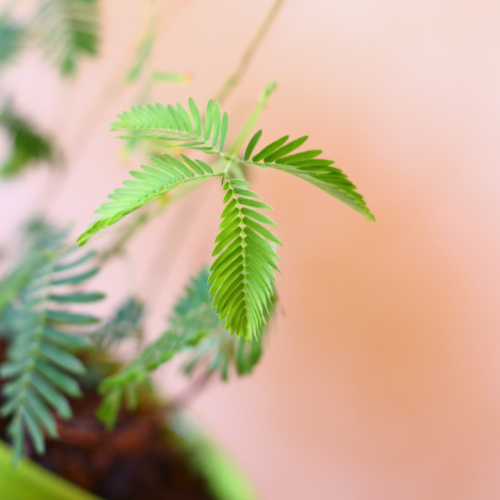
Sensitive Plants in Pots – Getting the Soil Right
Proper soil mix is key for your sensitive plant’s success. Learn how to create the ideal potting environment to keep your plant thriving and responsive. Follow these steps to ensure your sensitive plant is healthy and active.
Choosing the Right Soil Mix
Imagine wearing a tight, uncomfortable pair of shoes all day. Not fun, right? Well, the wrong soil mix can feel just as constricting to your sensitive plant. Here’s how to get it right:
- Airy and light: Aim for a loamy soil mix that’s well-aerated and lightweight. This ensures the roots can breathe and grow without getting waterlogged.
- Drainage is key: Add materials like perlite, coarse sand, or even a handful of small pebbles to promote better drainage within the pot.
- Don’t forget nutrients: While drainage is important, so is feeding your plant. A mix that includes compost or worm castings will give your sensitive plant the boost it needs.
Getting the right blend might take a little experimentation, but when you see your sensitive plant thriving, you’ll know you’ve nailed it.
Selecting the Perfect Pot
Now, let’s talk pots. The right pot not only complements your home decor but also supports the health of your plant:
- Size matters: Start with a pot that’s not too large. A pot that’s too spacious can lead to overwatering issues, as the soil stays damp for too long.
- Material counts: Terra cotta or other breathable materials are fantastic for sensitive plants. They allow air and moisture to move through more freely than plastic pots.
- Drainage holes are a must: This cannot be stressed enough. Ensure your pot has adequate drainage holes to prevent water from pooling at the bottom.
Choosing a pot is like picking a home for your plant; it needs to be just right for growth and health.
The Importance of Proper Drainage
Why all this fuss about drainage, you ask? Well, too much water is the arch-nemesis of this shy plant. It can lead to root rot, a villainous condition that spells doom for our green friends. Proper drainage ensures that water flows through the soil, moistening it just enough without waterlogging. It’s all about creating a comfortable, cozy environment for those roots to spread out and soak up the good stuff. Remember, happy roots equal a happy plant.
By focusing on the right soil mix, selecting the ideal pot, and ensuring proper drainage, you’re setting the stage for your sensitive plant to put on its best performance. Now, who’s ready to be the director of their very own leafy show?
Optimal Growing Conditions for Sensitive Plants Indoors
Growing a healthy sensitive plant indoors is all about meeting its specific needs. By understanding what it requires and providing the right environment, you can ensure your plant flourishes and stays happy. Let’s discover the ideal conditions that will help your sensitive plant thrive.
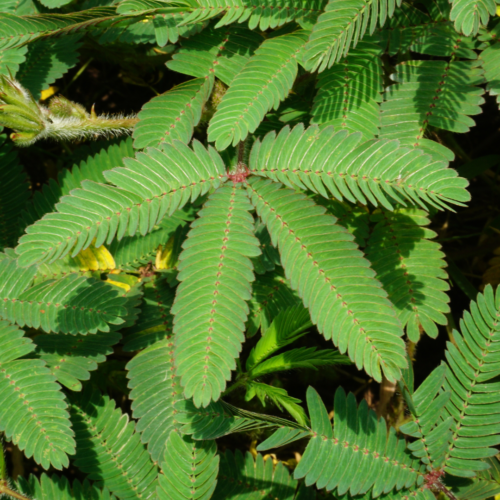
Lighting Requirements
Light is absolutely essential to your plant, especially indoors. Your sensitive plant desires bright, indirect light to flourish. Think of a spot near a window that’s draped with a sheer curtain, allowing soft sunlight to filter through. An ideal location would be an east-facing window where it could get a few hours of sun in the morning, but be shaded from the hot, afternoon light. This mimics the dappled sunlight of its natural habitat beneath taller trees and shrubs. Direct, harsh sunlight can be overwhelming, leading to leaf burn, while not enough light might stunt its growth and reduce responsiveness. Finding bright light that isn’t burning your plant is tricky, but when you get it right, your plant will thank you!
Watering: How Much and How Often
Watering is a bit of an art form. The goal is to keep the soil consistently moist, not drenched. Overwatering is a common misstep that can lead to root rot, while under-watering can stress the plant, causing it to shut down and stop performing its characteristic movements. A good rule of thumb is to water when the top inch of soil feels dry to the touch. And always ensure that excess water can drain freely to avoid soggy conditions. You want moist soil for several days, then you want it to dry out a bit before watering.
For information on watering, check out my post How to Water Houseplants.
Temperature and Humidity Needs
Remember, the sensitive plant is a tropical soul at heart. It thrives in warm temperatures and high humidity. Aim to keep your indoor garden oasis between 60-75°F (15-24°C). If your home feels dry, especially during the winter months, a humidifier can work wonders, or you might place the pot atop a tray filled with water and pebbles to increase humidity levels naturally. Just be sure the pot isn’t sitting directly in water.
Fertilizing Your Sensitive Plant
Feeding your plant is like providing a buffet of nutrients. A balanced, water-soluble fertilizer applied every 4-6 weeks during the growing season will do the trick. However, moderation is key. Think of fertilizing as providing a well-rounded diet – too much can lead to nutrient burn, whereas too little might starve your plant. Finding that nutritional balance will encourage lush growth and ensure your plant remains lively and interactive. I’ve found that sensitive plants enjoy a high-potassium liquid fertilizer to give them a fast burst of new growth, especially in the spring, or late summer before they go dormant.
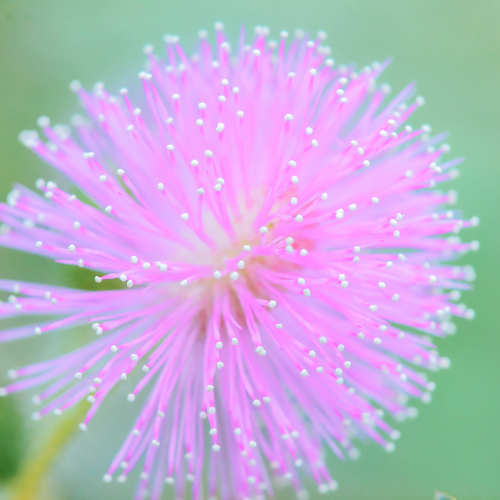
Common Challenges in Growing Sensitive Plants
Let’s face it, growing a sensitive plant can sometimes feel like you’re navigating through a jungle of challenges. But don’t let that deter you! Most obstacles are just stepping stones on the path to becoming a seasoned plant parent. Here’s how to tackle two of the most common hiccups you might encounter in growing your sensitive plant.
Dealing with Pests and Diseases
No garden is an island,even indoors, and sometimes unwanted guests show up to the party. Spider mites, aphids, and fungal infections can crash your sensitive plant’s vibe, leading to droopy leaves and a lackluster appearance. But fear not, for there are weapons in your arsenal:
- Stay vigilant: Regular check-ups are key. Catching pests early can prevent an infestation.
- Neem oil is a good idea: A natural insecticide, neem oil can ward off pests without harming your plant.
- Aeration is crucial: Ensure your plant has good airflow to prevent fungal diseases. A cramped and humid environment is a breeding ground for trouble.
- Dry leaves: After watering, make sure the leaves aren’t left wet, as this can attract fungi. If possible, water the soil directly to avoid getting the leaves wet.
Remember, the key is prevention. A healthy plant is less likely to succumb to pests and diseases.
Overcoming Low Germination Rates
Starting your sensitive plant from seed can sometimes feel like a gamble. But don’t fret if your first attempt doesn’t result in a greenhouse. Here’s how to up your odds:
- Quality seeds: Make sure your seeds are fresh and sourced from a reputable vendor. Old or improperly stored seeds have lower germination rates.
- Pre-soak: Soaking seeds before planting encourages them to wake up and get growing.
- Consistent temperatures: Sensitive plant seeds like it warm. Consider using a heat mat to maintain a cozy germination environment.
- Patience is key: Sometimes, seeds take their sweet time. Don’t give up too quickly; wait a few weeks before calling it quits.
Low germination rates can be discouraging, but they’re also an opportunity to learn and refine your approach. With each attempt, you’ll get closer to sprouting your very own sensitive plant.
For more tips on seed starting, check out my 10 Tips to Successfully Start Seeds Indoors.
Whether you’re battling pests or coaxing seeds to sprout, remember that challenges in gardening are par for the course. They offer chances to grow—not just for your plants, but for you as a caregiver and enthusiast. Armed with knowledge and a bit of persistence, you’ll find that these common hurdles only add to the rewarding experience of growing a sensitive plant.
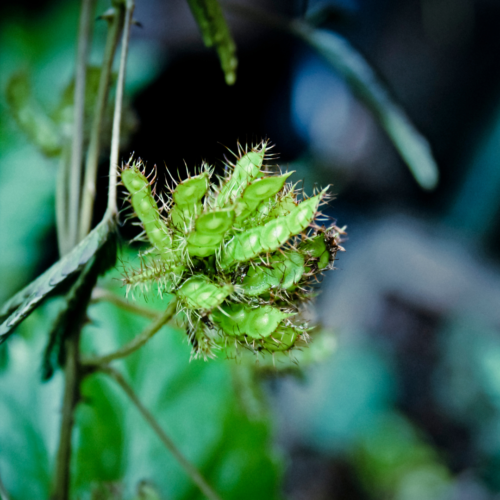
Propagating Sensitive Plants
Ever wish you could clone your favorite sensitive plant? Good news—you can! Propagation is the plant parent’s version of a magic trick, turning one plant into two (or more)! Whether you’re a propagation pro or trying it for the first time, let’s dive into the two main methods of multiplying your sensitive plant family.
Using Seeds for Propagation
Starting from seeds is a journey of patience and excitement. It’s like hitting the plant jackpot when those tiny seedlings finally peek through the soil. Here’s how to ensure your seed propagation is a success:
For growing sensitive plants from seeds, refer to the previous tips mentioned for general seed propagation success.
Remember, while seed propagation is super rewarding, it takes time. Be patient, and you’ll see your efforts bloom before your eyes.
Cutting Propagation Methods
The best way to propagate your sensitive plant is through taking stem cuttings. Plus, it’s a bit like ensuring your new plants have the same awesome personality as the parent. Here’s your cutting propagation cheat sheet:
- Choose healthy stems: Look for vibrant, healthy stems that are free from pests or damage.
- Make the cut: Using sharp, clean scissors, cut just below a leaf node (that’s where the leaf joins the stem). Your cutting should be around 4-6 inches long.
- Rooting hormone: Dip the cut end into rooting hormone. This isn’t a must, but it can help speed up the rooting process.
- Plant your cutting: Stick the cutting into a moist potting mix. Keep it warm and moist, and in a few weeks, you should see new growth.
Whether you choose seeds or cuttings, propagating your sensitive plant offers a delightful peek into the circle of plant life. Each method has its charms and challenges, but the end result—a new plant to love and care for—makes the journey worthwhile. So why not give it a go? Your indoor jungle (and maybe a friend or two) will thank you for it.
How to Grow Sensitive Plants Outdoors
Taking your sensitive plant outdoors can feel a bit like sending your kid off to camp for the first time. Exciting, but slightly nerve-wracking. However, with the right conditions and a little prep, your sensitive plant can thrive and become one with nature. Let’s explore how to transition your indoor buddy to the great outdoors.
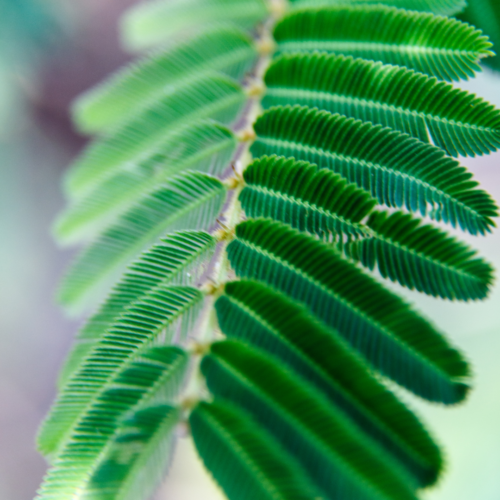
Outdoor Climate Requirements
The sensitive plant is tropical at heart, which means it has a preference for warm, humid climates. If you’re living in a region with mild winters, you might be able to grow your sensitive plant outdoors year-round. And for more technical terms, sensitive plant can survive between usda hardiness zones 9 to 11. Here’s the scoop on how to keep one alive outdoors:
- Temperature: Keep in mind that Mimosa pudica doesn’t do well in temperatures below 60°F (15°C). If your area drops cooler than this, consider growing it as an annual or bringing it indoors when the temperature falls.
- Sunlight: Choose a spot that gets filtered sunlight. Direct, full sun can be too much for the sensitive plant, leading to burnt leaves. Think ‘sun hat’ rather than ‘sunbathing’.
- Soil: Just like indoors, your sensitive plant will love well-draining soil. If your garden soil is heavy, consider amending it with sand or growing your plant in a raised bed or well-draining pot.
Your outdoor space can be the perfect summer holiday spot for your sensitive plant, provided the conditions are just right.
Transitioning Indoor Plants Outdoors
Moving our indoor houseplants plant from the cozy indoors to the variable outdoors is a bit like acclimatizing to a new culture—it takes time and gentle exposure. Here’s how to make the transition smooth:
- Start slow: Begin by placing your plant outside for a few hours each day in the shade or a partial shade area. Gradually increase the time it spends outdoors over the course of a week or two.
- Avoid sunburn: Just like humans can get sunburned, plants can too. Ensure the first few outdoor excursions are in indirect sunlight to prevent leaf burn.
- Monitor closely: Keep an eye on how your plant reacts to the outdoor environment. If you notice any signs of distress, such as wilting or browning leaves, adjust its location or bring it back inside sooner.
Transitioning your sensitive plant outdoors is a chance for it to enjoy the natural elements, from the caress of a summer breeze to the joy of unfiltered daylight. With a bit of care and attention, your plant will not only survive outdoors but truly flourish.
Growing a sensitive plant outdoors is an adventure, peppered with both challenges and rewards. It’s a testament to the resilience and adaptability of both the plant and the gardener. So, why not take the leap and give your sensitive plant a taste of the great outdoors? The fresh air, natural light, and expanded growing space might just bring out the best in your leafy friend.
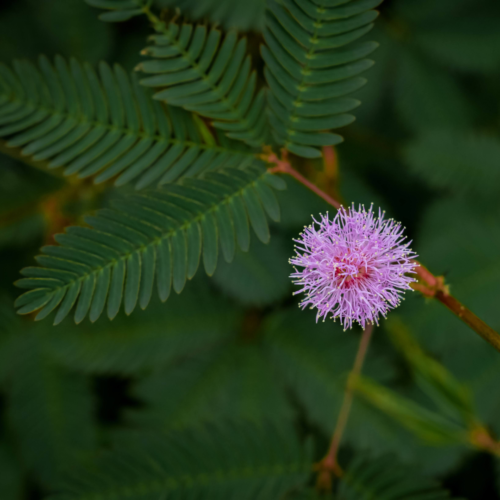
Conclusion: Keeping Your Sensitive Plant Thriving
Master the art of nurturing your mimosa pudica plants for lifelong companionship. Here are the key essentials:
- Perfect the soil and potting mix that allows for plenty of drainage.
- Provide bright, indirect sunlight and a warm, humid setting.
- Water wisely to keep the soil lightly moist.
- Monitor for pests and diseases proactively.
- Propagate for extra plant happiness.
- Above all, enjoy growing one of these beautiful moving houseplants!
Here’s to many rewarding years ahead!
FAQs
How Often Should I Water My Sensitive Plant?
For your sensitive plant, use the “touch test”. Stick your finger into the soil up to the first knuckle; if it’s dry, it’s time to water. This may be around once a week but varies based on plant size, pot, indoor climate, and season. Keep the soil evenly moist for your sensitive plant’s preference for consistency, akin to the perfect cup of tea balance. Yellow leaves could be a sign you are over-watering your sensitive plant.
Can Sensitive Plants Bloom Indoors?
Yes, they can! Under the right conditions, sensitive plants will bless you with pink, fluffy flowers that look like tiny pom-poms cheering you on. To increase your chances of seeing these blooms, ensure your plant gets plenty of indirect light, warmth, and humidity. And remember, patience is key. Just like waiting for your favorite series to drop a new season, anticipation is part of the fun!
Why Are My Sensitive Plant’s Leaves Not Closing?
If your plant is giving you the silent treatment and not closing its leaves, it might be feeling a bit under the weather. Common culprits include overwatering, underwatering, lack of light, or even just the need for some time to adjust to a new environment. Review your care routine and adjust as needed. Sometimes, all it takes is a bit of detective work to get back on speaking terms. And don’t worry, sensitive plants are forgiving. With a bit of TLC, those leaves will be moving again in no time.
Remember, growing a sensitive plant is a journey filled with learning, experimenting, and enjoying the small victories along the way. Whether you’re troubleshooting, watering, or eagerly awaiting blooms, every moment is a step towards becoming a more attentive and responsive plant parent. Happy gardening!

